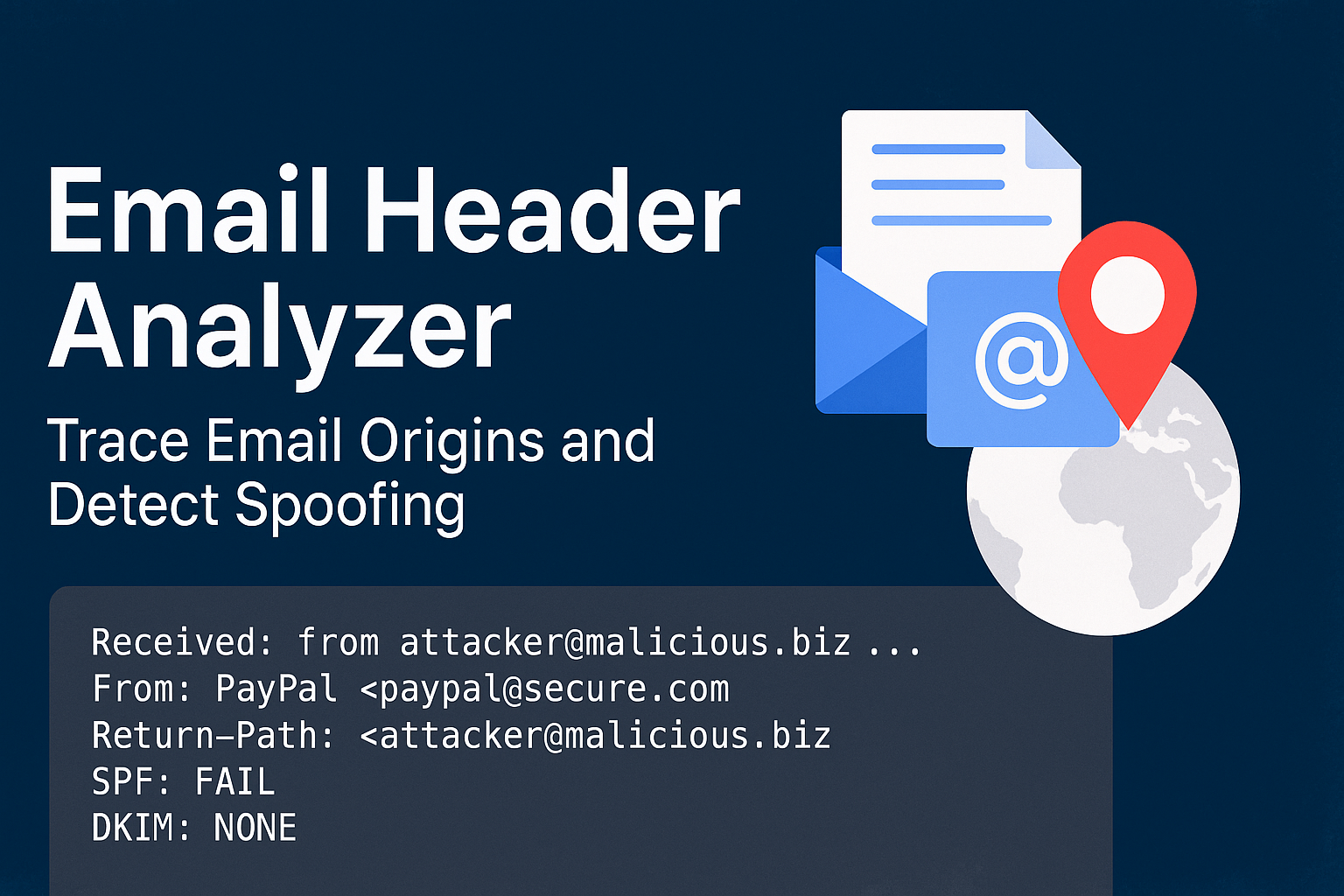
19
Email Header Analyzer – Trace Email Origins and Detect Spoofing
Email Header Analyzer is a forensic tool that parses and visualizes email header data, helping you trace sender origins, detect phishing attempts, and analyze mail routing paths.
What Is an Email Header Analyzer?
Every email contains a hidden header with metadata about its path, origin, and authentication. An Email Header Analyzer reads this metadata and organizes it so you can:
- Trace the IP address of the sender
- See server hops (Received headers)
- Validate SPF, DKIM, and DMARC
- Detect spoofed or forged senders
- Investigate spam, phishing, or email-based threats
🔍 What You Can Learn
FieldMeaningReceived: | Email relay chain and IPs
From: / Return-Path: | Claimed sender vs actual origin
SPF / DKIM / DMARC | Authentication check status
Message-ID: | Timestamp and mail system trace
User-Agent: | Mail client or script used to send email
🛡️ Cybersecurity Use Cases
- Phishing Detection
Confirm whether a suspicious message really came from your bank, boss, or customer. - SPF/DKIM/DMARC Debugging
Ensure your domain is sending authenticated email. - Email Chain Forensics
Analyze compromised accounts or spoofing attempts by tracing mail servers. - Identify IP Sources
Pinpoint the original sending IP address and its location using IP geolocation.
💡 Sample Use Case
You receive an email from paypal@secure.com, but the header shows:
- Return-Path: attacker@malicious.biz
- SPF: FAIL, DKIM: NONE
- Origin IP resolves to Nigeria, not the U.S.
This is likely phishing — and an analyzer makes this easy to prove.
📦 Format Support
Simply paste the raw header of an email (from Gmail, Outlook, etc.) into the tool, and get:
- Structured results
- IP origin map
- Authentication verdicts
- Copy/share features for reporting
🧩 Final Thoughts
Email threats hide in plain sight—but email headers tell the real story. An Email Header Analyzer gives you the power to reveal hidden metadata, trace spoofed messages, and secure your inbox.
Unmask the message. Expose the source. Stay safe.
Contact
Missing something?
Feel free to request missing tools or give some feedback using our contact form.
Contact Us